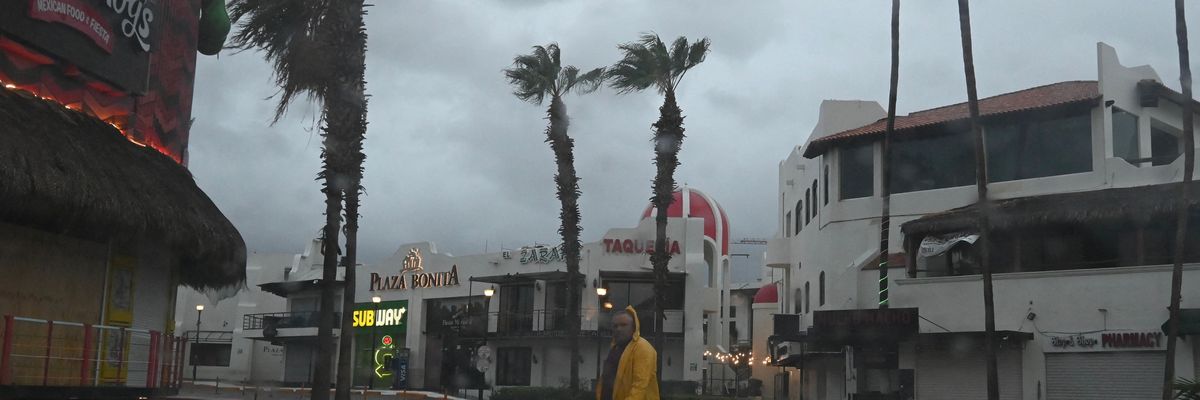Climate scientists and advocates raised alarm Saturday as parts of northwestern Mexico and Southern California braced for potential "catastrophic and life-threatening flooding," with Hurricane Hilary barreling toward the region.
With 130 mile per hour winds, the Category 4 storm was expected to still be categorized as a hurricane when it makes landfall in Baja California, Mexico on Saturday evening, according toThe Guardian.
Although it's expected to weaken to a tropical storm by the time it reaches Southern California, officials have issued a Level 4 of 4 threat for excessive rainfall for parts of the region and are warning that California, Arizona, and Nevada may get more than a typical year's worth of rain over the next two days.
Hilary would be the first tropical storm to hit Southern California in 84 years, and the state's tropical storm watch is unprecedented.
The projected historic storm was alarming on its own to climate scientists—who say the climate emergency and planetary heating can make hurricanes more frequent, powerful, and damaging—but advocates including 350.org co-founder and author Bill McKibben noted that California's preparations for the storm were just the latest in a "summer of 'firsts.'"
The storm-watch began as U.S. President Joe Biden prepared to travel to Maui County, Hawaii to survey the damage of the deadliest wildfire in the U.S. in a century, killing at least 111 people. In Canada, wildfires forced the entire city of Yellowknife, Northwest Territories to evacuate this week.
Across the U.S., a heat dome caused by high pressure trapping heat underneath it has broken temperature records across the South this summer, and scientists in Asia, Africa, the U.K., and elsewhere have also recorded unprecedented heat—which the World Weather Attribution said last month would have been "virtually impossible" without the continued extraction of planet-heating fossil fuels.
Although the level of global warming thus far is "remarkably close to median projections for where we would be at this point," UCLA climate scientist Daniel Swain told the Los Angeles Times on Friday, "the increase in certain kinds of extreme events [is] greater than had been predicted."
"At this point, every unprecedented extreme heat event has a human fingerprint on it," he said. "It would be extraordinarily unlikely for a study to come out and say, 'Oh, amazingly, this is a unique heat wave in that it wasn’t made worse by climate change.'... Same thing with really extreme precipitation events."
